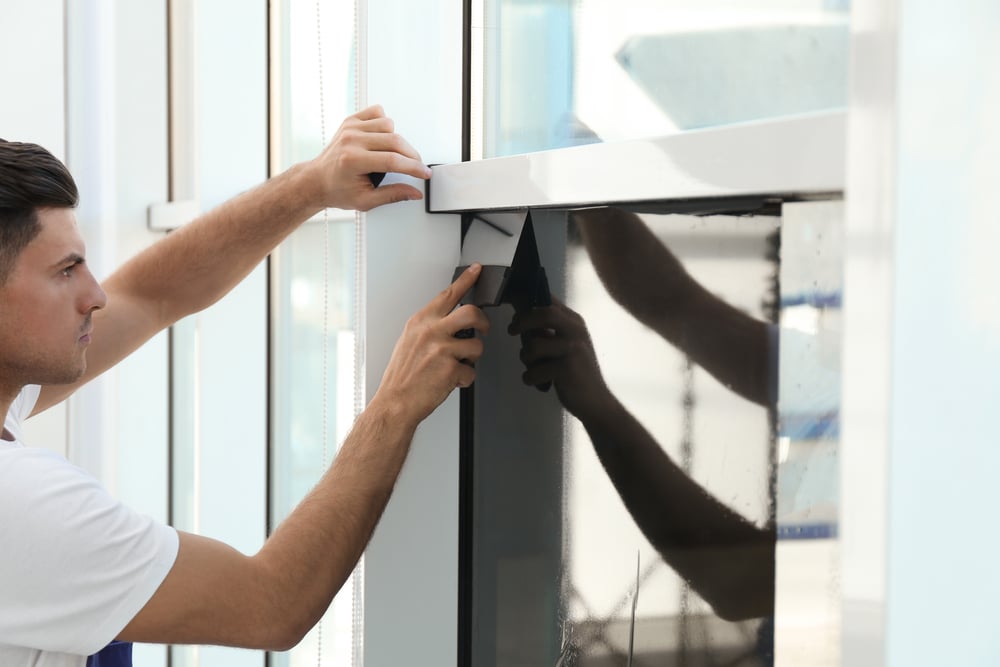Many types of window films require a curing or drying period after installation. This step is essential for ensuring the proper adhesion, durability, and overall performance of the film. Curing allows the adhesive to fully bond with the glass, ensuring that the film stays securely in place and performs as expected for years to come.
The curing time can vary based on several factors such as the type of window film, the adhesive used, the ambient temperature, humidity levels, and the manufacturer’s specific instructions. Here’s a breakdown of curing times for different types of window films and helpful tips to ensure optimal results:
Standard Window Films
For most standard window films, the recommended curing time is typically 3 to 5 days. During this period, it’s important to avoid activities that could disrupt the curing process, such as:
- Cleaning the film with liquids
- Rolling down the windows (for automotive films)
- Placing any adhesive materials on the film surface
This allows the film to set and bond securely to the glass surface, ensuring long-lasting performance and protection.
Decorative and Privacy Films
Decorative and privacy films generally follow similar curing guidelines as standard films. However, because these films often have intricate designs or patterns, it’s crucial to follow the manufacturer’s instructions carefully to ensure the film adheres properly without damaging the design.
Security Films
Security window films, which are thicker and designed to provide added protection against break-ins and impacts, usually require a longer curing time. It’s not uncommon for these films to need 30 days to fully set and establish optimal adhesion. This extended curing period ensures that the film can provide maximum durability and security.
Specialized Films
Some high-performance or specialized films—like those that offer advanced heat rejection or UV protection—might have unique curing requirements. Always check the manufacturer’s instructions for specific guidance on curing time and any particular handling precautions.
Factors That Affect Curing Time
The curing process is not solely dependent on the film type; environmental conditions play a significant role as well. For example:
- Warmer temperatures and lower humidity can speed up the curing process.
- Colder temperatures and higher humidity might cause the process to take longer.
It’s essential to be aware of the temperature and humidity in the area where the film was applied, as these factors will influence how quickly the adhesive bonds.
What to Expect During Curing
During the curing period, don’t be alarmed if you notice some temporary changes in the appearance of your window film. These are completely normal and usually resolve as the film fully bonds to the glass. Common changes include:
- Hazy or cloudy appearance: This is common during the initial curing phase and typically clears up within the first few days.
- Water bubbles: Small bubbles may form under the film immediately after installation but should evaporate as the film dries and cures.
- Tiny particles or dust: Since it’s nearly impossible to eliminate every bit of dust from the air, you might see a few small particles trapped under the film. These are usually only visible from the outside and don’t affect the film’s performance.
Post-Curing Care
Once the window film has fully cured, it will provide all the benefits you expect, such as heat reduction, UV protection, glare reduction, or increased security. At this point, you can clean the film with non-abrasive cleaning solutions and maintain it like any other window surface.
Key Tips for a Successful Curing Process
- Be patient: Allow sufficient time for the film to cure fully before cleaning or interacting with it.
- Follow manufacturer guidelines: Each window film has specific curing instructions, so always adhere to the recommended time frames and care tips.
- Avoid harsh chemicals: During the curing period, avoid using cleaning products that could disrupt the adhesive.
If you have any doubts or concerns about the curing process, consider consulting with professionals who specialize in window film installation. They can offer valuable guidance to ensure that your window film performs as intended and lasts for years to come.
In conclusion, curing time is a crucial step in the window film installation process. Whether you’re enhancing your home with UV-blocking films, improving energy efficiency, or adding security protection, giving the film time to properly bond to the glass will ensure you enjoy its full benefits.

